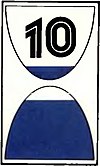
Construction
in the
Federal
Domain
Millions of Americans visit national parks and forests and other Federal recreational areas each year. From this experience, they enrich their lives and gain new appreciation of their national heritage and of the natural beauty of the country. It is difficult today to realize that just a few decades ago the trip that is casually made now by automobile was impossible because there was no transportation system giving citizens access to these areas.
The thrust of western migration across the continent during the first 150 years settled the land and still left vast areas in the public domain. It was from these public land areas that Congress established the first national parks and national forests. Yellowstone National Park, the first national park, was created by act of Congress in 1872.[1] Other national parks were gradually added and by 1900, included Yosemite, General Grant, Mt. Rainier, and Sequoia. A rapid expansion of the national parks system followed in succeeding years.
National forests have developed in a similar fashion. The first forest reserves were authorized by Congress in 1891,[2] and again, they were taken from the public domain in the West. The forest reserves were created to perpetuate the country’s supply of timber and to ensure a more regular flow of water from streams by preserving the forest floor to prevent too rapid run-off and flooding. In 1905, Congress transferred the forest reserves from the Department of the Interior to the Department of Agriculture, and in 1907, Congress changed the name “forest reserve” to national forest. Like the national parks, the national forests expanded rapidly and today constitute a major resource of this Nation.
The development of both the national parks system and the national forests occurred during the same period as the development of the Nation’s highway system. Because the Federal Highway Administration is the “roadbuilder” for the Federal Government, it has been directly engaged in the location, design, and construction of public roads to and through the national parks and forests and other Federal domain areas since 1905. In spite of extremely limited staff and resources in the early days, the Office of Public Roads constructed a macadam road on the grounds of the Weather Bureau Station in Mount Weather, Virginia; assisted the Forest Service in securing information to be used in the preparation of a manual on trailmaking and maintenance; and gave advice on the construction of wagon roads and trails in forest reserves to facilitate lumbering. One engineer was detailed for a short time in the Yellowstone Reserve during 1906 to investigate and make recommendations for the improvement and maintenance of forest roads and trails.[3]
In 1912 the Agriculture Appropriation Act contained a provision that 10 percent of all moneys received from the national forests during each fiscal year be available at the end of the year for use by the Secretary of Agriculture for the construction and maintenance of roads and trails within the national forests in the States from which such proceeds were derived. This provision was made a continuing appropriation by the Agriculture Appropriation Act of 1913. These laws provided, for the first time, a sustained source of revenue for road improvement purposes in the public domain.
486
- ↑ R. Lee, Family Tree of the National Park Service (Eastern National Park and Monument Association, Philadelphia, 1972) p. 9.
- ↑ Public Roads Administration, Report to the Committee On Roads, House of Representatives, Forest Highway System (Federal Works Agency, Washington, D.C, 1940) p. 2.
- ↑ Bureau of Public Roads Annual Report, 1906, p. 23; 1907, p. 21.
